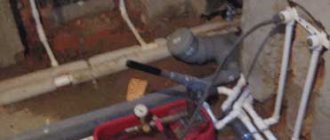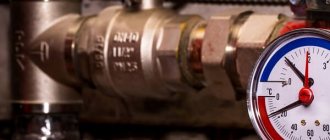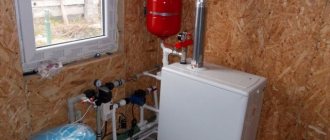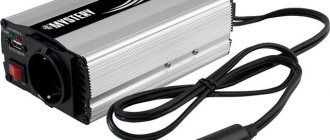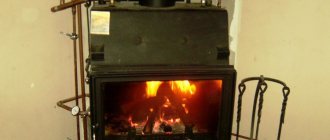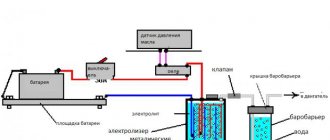Having built a country house, every person thinks about how to effectively heat their home. To achieve this goal, heating systems are installed, the main element of which is a heating boiler. Stable room temperature largely depends on the uninterrupted functioning of the boiler unit.
In order for the boiler to operate stably, it is necessary to carry out regular maintenance of the boiler equipment.
One of the types of maintenance is cleaning the boiler unit from scale. In this article we will talk in detail about what scale is, as well as how to effectively get rid of its presence in boiler equipment.
Causes of scale formation
The main reason for the appearance of scale in steam boilers is the use of hard water, that is, with calcium and sodium salts dissolved in it. The amount of dissolved impurities is characterized by the concept of “hardness,” which is qualitatively divided into the following types:
- soft – up to 2 mg/eq. liter,
- average – from 2 to 10 mg/eq. liter,
- hard – from 10 mg/eq. liter.
That is, the ideal option is to use distilled water, which will cause additional financial costs. Boiler manufacturers recommend that the hardness parameter be up to 0.1 mg/eq. liter.
The ideal option is to use distilled water
Another cause of scale is the use of low-quality or cheap water purifiers and softeners, which are not recommended by the manufacturer and contain salts.
What is a heat exchanger
A gas boiler has an element in its design that is located above the firebox and consists of connected tubes. The coolant circulates in them. Its location is not accidental; combustion of gas in the boiler must heat the coolant, which is located in the heat exchanger.
The coolant is water. It heats up and passes further through the system. But untreated water contains many impurities that can settle in the tubes when heated. Most often these are salts and lime particles. When large, it is difficult to pass through the tubes, which leads to malfunctions.
How to detect?
The presence of scale during heating with a heating boiler unit can be visualized by dismantling and partially disassembling it. However, in this case the warranty and service are lost. In addition, it is necessary to involve specialists to prevent damage to the structure.
Another detection method can be called indirect, since it can be implemented without disassembling the boiler itself. To do this, you need to turn off the boiler, wait until it cools down, and then unscrew the nut on the heating circuit pipe, drain the water and examine the condition of the inner surface. If scale is present, white deposits or salt flakes will be visible.
Characteristic signs of scale formation
Signs of scale in boilers are:
- reduction in maximum heating temperature,
- increased energy consumption,
- overheating of external surfaces,
- overheating protection triggered,
- occurrence of breakdowns: heating element burnout, boiler depressurization,
- different temperatures of radiators,
- the appearance of extraneous noise.

One of the signs of the presence of scale in boilers is a decrease in the maximum heating temperature
Time to clean the heat exchanger
There are many contradictions about when it is necessary to flush the heat exchanger of a gas boiler. There are signs that will tell you that it's time for cleaning. The most important of them:
- constantly switched on in the boiler;
- the circulation pump began to make noise, which indicates that it was overloaded;
- heating radiators take much longer to heat up;
- gas consumption has increased, although the boiler operating mode has not changed;
- the water pressure has weakened (pay attention to this sign when you need to flush a double-circuit boiler).
Types of descaling
Cleaning boilers from scale can be done in two ways:
- dismountable, when its quantity has reached critical volumes that cannot be removed in any other way, and further operation of the device is also impossible,
- non-removable, which allows you to prevent the appearance of deposits on the internal walls of the case in advance, as well as get rid of them, provided that effective cleaning means are used.
Collapsible view
The dismountable method is the most effective, but labor-intensive. It allows you not only to assess the current condition of the boiler, but also to completely get rid of scale in any suitable way: mechanical or chemical.
A step-by-step analysis of the design is performed as follows:
- We study the disassembly instructions, if they are offered by the manufacturer, or the device diagram. We select the necessary tools. We prepare cleaning products and consumables for maintenance.
- Disconnect the boiler from the power supply and wait until it cools down to room temperature.
- We close the valves on the inlet and outlet pipes of the heating circuit and drain the water from the boiler.
- We remove the protective casing by unscrewing the bolts at all its attachment points. In this case, it is important to control the efforts so as not to break the thread.
- Remove the top cover and gain access to the inner container.
- We dismantle the heating element and heat exchanger (if provided for by the design).
The disadvantages of this method are: inapplicability for non-dismountable welded sealed structures, the likelihood of incorrect assembly or damage to the heat-resistant coating.
Non-separable view
The non-dismountable method is used to reduce and eliminate scale formation on your own without the likelihood of serious consequences for the operation of the equipment. Its advantage is that there is no need to involve specialists. In some cases, to implement it, you do not need to turn off the boiler and then start it again.
This type of scale control has a number of disadvantages:
- cleaning efficiency can be assessed only by indirect signs: stabilization of temperature indicators, uniformity of heating, etc.,
- inability to control how much scale remains in the boilers and whether further removal is required,
- the difficulty of selecting the most effective product due to the unknown chemical composition of scale,
- instability of the boiler during cleaning.
We recommend
DOCKER THERMO is an effective solution for flushing heating systems. Recommended for treating boilers, high and low pressure boilers, condensers, heat exchangers, pipelines, and for flushing household water heating appliances. The selectively active composition of the substance allows you to flush systems not only with metal, but also with plastic or rubber tubes. Concentrate.
More details
Heating system installation
Methods for descaling
There are the following methods for removing scale from the surface of steam boilers:
- mechanical,
- chemical,
- hydrodynamic.
Mechanical cleaning
Mechanical cleaning of the boiler is carried out only after its partial disassembly with access to the inner surface of the water container. Before performing this, it is important to reduce its temperature, then remove the separation device.
Before choosing a cleaning method, it is important to assess the amount of scale in steam heating boilers, its nature (composition) and hardness. To do this, carefully remove the loose surface layer with a scraper (in hard-to-reach places) or a flexible cap on an electric motor or air turbine. During the cleaning process, you need to create an intense air flow forced by a fan.
The cap head must be applied parallel to the layer of scale and gently pressed on it. Its diameter is selected to be at least 3 mm less than the space available from scale.
The coupling head is passed along the surface by itself if the thickness of the scale layer is small and it is easily removed, otherwise cleaning is carried out with a reciprocating motion. This will extend the life of the tool itself and not damage the internal protective layer of the boiler.
Manual cleaning is used only in cases where it is not possible to use mechanized heads or for hard-to-reach places. When performing work, you must constantly monitor the removal of the layer, washing off its residues from the surface with water. After completion of work, all internal surfaces of the boiler are washed and removed scale residues are removed.
Chemicals
If the amount of scale in boilers is relatively small, then it is recommended to use chemical compounds to remove it. They are selected based on data on the thickness of the formed salt layer in order to soften it or peel it off from the internal surfaces of components and parts, followed by washing it off with water. The percentage of the active substance should be such as to remove all scale, but not damage the protective coating.
For cast iron and steel boilers, they use reagents based on mineral and organic acids, alkalis, as well as mixed compositions of universal action. The most popular products are based on hydrochloric, orthophosphoric, sulfamic, citric or ascorbic acids, to which a corrosion inhibitor is added. For boilers made of stainless steel, compositions based on sulfamic and phosphoric acids are effective.

If the amount of scale in boilers is relatively small, then it is recommended to use chemical compounds to remove it
Reagents with corrosion inhibitors can not only counteract rusting processes, but also provide protection for the metal.
The step-by-step cleaning process with boiler disassembly is performed as follows:
- We provide conditions for the protection of electronic equipment so that the reagent does not come into contact with it.
- Using a stream of water for several hours, we wash away soft deposits that have a weak connection with the surface.
- We perform washing with an acid solution with a corrosion inhibitor at room temperature or with the boiler heated. The temperature is selected in accordance with the type of composition used and the recommendations of the reagent manufacturer.
- Washing surfaces with water to remove acid residues and dissolved scale deposits.
- Removing deposits from the boiler with a powerful jet of water.
- Neutralization and passivation of all internal metal surfaces with a special composition.
The amount of scale in boilers can also be reduced without disassembling it, but directly during operation by adding purified water with dissolved chemical reagents in strictly calculated proportions. In this case, strong acids are not used, but solutions of chelates and polymers. The limitation for the use of such substances is the maximum permissible pressure in the boiler of up to 50 bar.
The action of chemical compositions is based on the capture of calcium and magnesium ions by chelates, as well as complexes containing them, the transition of insoluble salts into an aqueous solution, followed by transformation into colloidal forms in the presence of polymers. In this case, the metal inside the boiler and the protective coating remain undamaged, but only if the proportions are strictly observed.
The duration of such cleaning can range from several days to a month. It all depends on the thickness of the scale and the proportion of the active substance in the water. The optimal mass of the reagent is 0.4-1 mg/l.
Hydrodynamic cleaning
You can clean the boiler without the use of chemicals and mechanical tools using a hydrodynamic method. It allows you to effectively remove scale of any composition, even in the most inaccessible places, without damaging the protective coating of the metal. Its implementation is based on the use of high-pressure units (up to 300 atmospheres).
The advantage of the hydrodynamic method is the ability to clean even sealed welded structures, heat exchangers with complex geometry and equipment for which other methods are not applicable. It includes the following steps:
- removal of deposits by circulating water with dissolved active substances under pressure,
- flushing the inside of heat exchangers with water under pressure,
- neutralization of metal surfaces,
- passivation with special reagents to protect metal from corrosion.
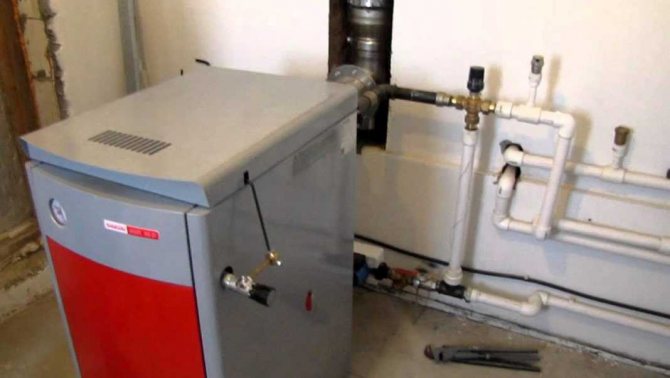
Cleaning should be carried out using this method only when the diameter of the boiler inlet and outlet pipes allows the necessary water flow to be achieved.
Cleaning can be carried out using this method only if the diameter of the boiler inlet and outlet pipes allows the necessary water flow and can withstand operating pressure for several hours. Thick and durable layers of scale are also the reason for abandoning this method.
Mechanical method of washing the heat exchanger
The main difference from the chemical method is the disassembly of the entire heat exchanger.
After this, each of the parts is washed separately with a stream of water under high pressure. This method is used in very rare cases when the contamination is not amenable to other types of cleaning.
Advantages:
- effective for severe contamination, even corrosion products can be washed only with this method;
- the use of chemicals is excluded - this is an absolutely safe method;
- no need for additional disposal of the washing solution.
Flaws:
- The main disadvantage of mechanical flushing remains the disassembly of the entire unit. This is very difficult to do, and some devices do not even have disassembly instructions. In any case, it will require a lot of effort and a lot of time.
- In order for the water pressure to be strong enough, you need to use an additional device.
- The cost of mechanical flushing will significantly exceed chemical flushing due to high labor costs.
Second option of the mechanical method:
- The first step is to disconnect the boiler from the power supply.
- Disassemble it and carefully remove the heat exchanger.
- Immerse the element in a container with a low concentration acid solution for a period of 3 to 7 hours, depending on the degree of contamination.
- Rinse the heat exchanger under running water and install it in its original place.
Experts advise that when rinsing with water, tap the device a little to improve cleaning. The most effective method is to soak the parts when cleaning a double-circuit boiler.
Measures to prevent scale in steam boilers
The amount of scale in boilers can be reduced by using measures to prevent its formation:
- install aluminum heating elements with heating power up to 2400 W,
- carry out regular maintenance,
- check the condition of protective coatings on internal parts,
- follow the manufacturer's recommendations regarding the quality of water used,
- use water softeners: chemical compounds, magnetic converters, etc.
Before descaling the boiler, it is necessary to evaluate the thickness and composition of the layer, the technical conditions of the work, and then select the appropriate method. This will determine not only the efficiency of deposit removal, but also the safety of the protective internal coating of the walls and surface of the heat exchanger. Only a competent approach to solving the problem will ensure the maximum service life of the boiler without breakdowns and with high efficiency.
flushing the heat exchanger
Boilers are cleaned using reagents, mainly acids, and a special installation is required.
Using such an installation, the acid is dissolved to the desired consistency and heated. Temperature significantly affects the quality of washing. After preparing the solution, it is supplied to the heat exchanger and then removed.
Cleaning of heat exchangers occurs due to the presence and circulation of acid in it. Finish washing with plenty of water.
There is a possibility that the scale consists of various chemical components, so cleaning must be carried out using additional boiler flushing with other chemicals.
There are advantages to acid washing:
- there is no need to remove and disassemble the device, which significantly saves time;
- after such cleaning, the most common contaminants - hardness salts and magnesium hydroxide - will not remain in the heat exchanger.
There are also disadvantages:
- it is used for minor contamination;
- those contaminants that are formed due to corrosion cannot be removed by this method;
- safety measures are required, since the reagents are very toxic and dangerous;
- The solution after washing must be neutralized and disposed of.


